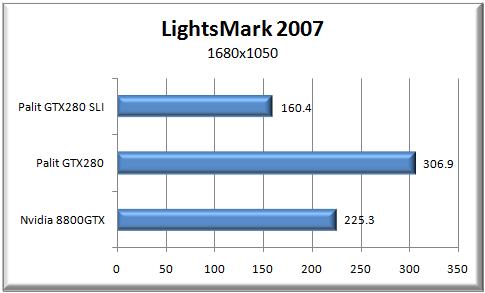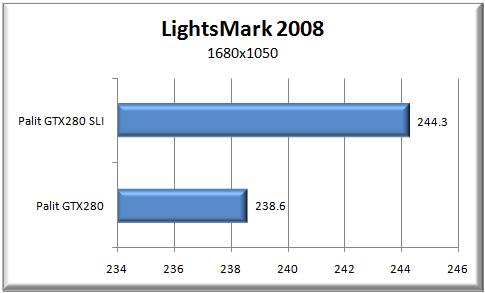|
Palit GTX 280 SLI

LightsMark 2007

Natural lighting makes artificial graphics life-like. Computers get faster, but rendering more polygons doesn't add value if lighting looks faked, so insiders know that the next big thing is proper lighting aka Realtime Global Illumination. Typical workloads in realtime rendering will shift. Lightsmark simulates it. Global Illumination renders often take hours. Is your computer fast enough for realtime?

So you can see that the Palit GTX280 itself received 306.9 frames per seconds while doing the intensive light rendering. This is an extremely high school and has even went over the maximum frame rate allowed using LightsMark 2007, which is 300 fps. But take a look at the nVidia 8800GTX, which scored 225 fps, you can tell that this 306.9fps is the real results and nothing messed up the benchmark. Although when I threw the other Palit GTX280 in the mix, I received a much lower score than I should have. Receiving 160.4 fps using the SLI configuration made me curious and I looked into the problem. I didn't happen to find much except for a newer version of LightsMark was received just weeks ago, so I figured I would have to give that a try.
LightsMark 2008

LightsMark 2008 renders the same scene as 2007 with some minor difference, one addition made was the max frame rate is now 400 frames per seconds instead of the previous 300 frames per second. Another feature that looks like it was added was support for SLI, as the two GTX280 scored higher than the single card. Like when most benchmarks update they get more intense and receive a lower score than the previous version, this holds true with LightsMark. Using the single card solution, the Palit GTX280 received 238.6 frames per second while the SLI configuration managed to pull out a mere six frames per second more than the single card.




